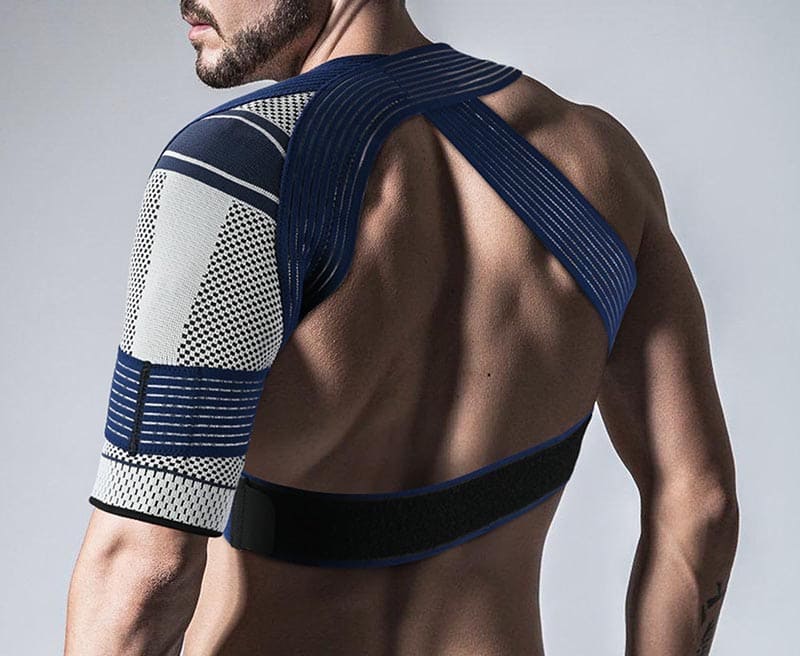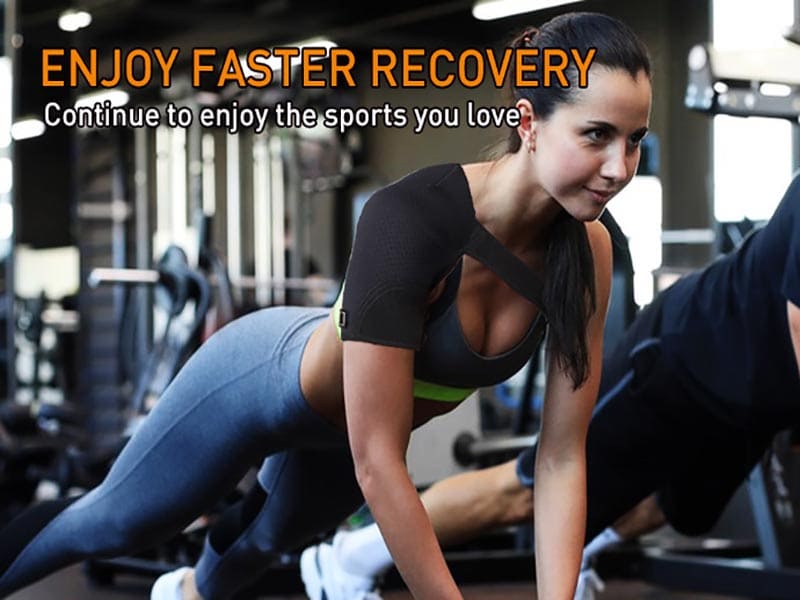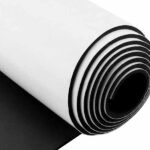You’ve been dealing with shoulder pain for weeks. Every movement feels uncomfortable, and daily activities like lifting, reaching, or even sleeping have become a struggle. You finally decide to get a shoulder brace, hoping it will provide the support and relief you need. But once you have it, you realize something—you’re not sure how to wear it properly. Should it feel tight? Should you wear it over or under clothing? And how do you ensure maximum support?
These are common concerns for many people using a shoulder brace for the first time. The right fit and proper usage are essential for pain relief, injury recovery, and muscle support. This guide will walk you through everything you need to know, from choosing the right type of brace to wearing it correctly and maintaining it for long-term use.
What Is a Shoulder Brace?

A shoulder brace is a medical support device designed to stabilize and protect the shoulder joint. It provides compression, support, and restriction of movement to help with pain relief and recovery from injuries.
Why Use a Shoulder Brace?
A shoulder brace can help in the following situations:
- Injury Recovery – Supports healing after a sprain, strain, or rotator cuff injury.
- Post-Surgery Support – Keeps the shoulder stable after surgery.
- Chronic Pain Relief – Helps with conditions like arthritis or tendonitis.
- Posture Correction – Prevents slouching and improves spinal alignment.
- Sports Injury Prevention – Reduces the risk of dislocations and strains.
What Materials Is the Shoulder Brace Made Of?

Shoulder braces come in different materials, each offering unique benefits. Below is a comparison of common materials used in shoulder braces:
| Material | Features | Best For |
|---|---|---|
| Neoprene | Flexible, durable, retains heat, water-resistant | Pain relief, sports recovery, daily support |
| Elastic Fabric | Lightweight, breathable, comfortable | Mild support, everyday wear |
| Nylon & Polyester | Strong, stretch-resistant, moisture-wicking | Long-term durability, heavy-duty use |
| Foam Padding | Soft, cushioned, pressure-relieving | Post-surgery support, extra comfort |
Among these, neoprene is widely used due to its compression, flexibility, and heat-retention properties, which aid in blood circulation and muscle recovery.
Which Type of Shoulder Brace Is Right for You?
Choosing the right shoulder brace depends on your specific needs. Here are the main types:
1. Compression Shoulder Braces
- Provides light support and pain relief.
- Ideal for minor injuries, muscle strains, and arthritis.
- Best for: Daily use, mild discomfort.
2. Shoulder Immobilizers
- Restricts movement completely.
- Recommended for post-surgery recovery or severe injuries.
- Best for: Post-operative care, broken collarbones.
3. Shoulder Stability Braces
- Offers moderate support while allowing limited movement.
- Used for rotator cuff injuries and dislocations.
- Best for: Sports recovery, preventing further damage.
4. Posture Correctors
- Helps realign the shoulders and spine.
- Reduces slouching and forward shoulder positioning.
- Best for: Office workers, people with poor posture.
What Is the Proper Way to Wear a Shoulder Brace?

Wearing a shoulder brace correctly ensures maximum support, pain relief, and stability. If worn improperly, it may cause discomfort or fail to provide the needed support. Follow these simple steps to wear it the right way.
Step 1: Choose the Right Size
A well-fitted brace provides the best support. Check the manufacturer’s size chart and measure:
- Shoulder circumference (around the widest part of your shoulder).
- Chest size (around the broadest part of your chest).
- Arm circumference (around the upper arm).
If between sizes, choose the larger size for comfort.
Step 2: Prepare Your Shoulder
- Wear a thin shirt under the brace if you have sensitive skin.
- Ensure skin is dry before wearing to prevent irritation.
- Check for wounds or rashes, covering them if necessary.
Step 3: Position the Brace Correctly
- Single-shoulder brace: Slip it over the affected shoulder like a backpack strap.
- Full-support brace: Wear it like a vest and align it on both shoulders.
- Posture corrector: Pull straps back to keep shoulders aligned.
Ensure it sits comfortably without twisting.
Step 4: Secure and Adjust the Straps
- Tighten the main shoulder strap for a firm but comfortable fit.
- Adjust secondary straps for extra stability.
- Test mobility—if it restricts circulation, loosen slightly.
Step 5: Wear Over or Under Clothing?
| Brace Type | Wear Under Clothing | Wear Over Clothing |
|---|---|---|
| Compression Brace | ✅ Yes | ✅ Yes |
| Shoulder Immobilizer | ❌ No | ✅ Yes |
| Posture Corrector | ✅ Yes | ✅ Yes |
| Sports Shoulder Support | ❌ No | ✅ Yes |
Step 6: Check Comfort and Mobility
- Can you move your arm slightly without discomfort?
- Is the brace secure but not overly tight?
- Are the straps evenly adjusted with no pinching?
If yes, you’ve successfully worn your shoulder brace.
Step 7: When and How Long to Wear It?
| Condition | Recommended Wear Time |
|---|---|
| Minor shoulder strain | 2-4 hours/day |
| Post-surgery support | 6-8 hours/day (doctor’s advice) |
| Posture correction | 4-6 hours/day |
| Sports recovery | During activity & 1-2 hours post-exercise |
Take short breaks to avoid muscle dependency.
Step 8: Removing the Brace
- Loosen the straps gradually before taking it off.
- Remove gently to avoid shoulder strain.
- Stretch your shoulder lightly after removal to prevent stiffness.
How Does Neoprene Enhance Shoulder Brace Performance?
Neoprene is a popular choice for shoulder braces because of its unique properties:
| Feature | Benefit |
|---|---|
| Compression Support | Helps reduce pain and swelling |
| Heat Retention | Improves blood flow for faster healing |
| Flexibility | Allows natural movement while providing stability |
| Durability | Resistant to wear and tear, lasts longer |
| Water-Resistant | Suitable for sports and outdoor use |
If you’re looking for a high-performance shoulder brace, choosing a neoprene-based option ensures maximum support and comfort.
Are There Common Mistakes to Avoid When Wearing a Shoulder Brace?

Wearing a shoulder brace incorrectly can lead to discomfort or ineffective support. Avoid these mistakes:
- Wearing It Too Tight – Can restrict blood flow and cause discomfort.
- Choosing the Wrong Type – Different injuries require different braces.
- Not Adjusting the Straps – Loose straps reduce support; overly tight straps cause pain.
- Ignoring Skin Irritation – Neoprene is safe, but prolonged wear without cleaning can cause rashes.
- Wearing It for Too Long – Overuse can lead to muscle dependence.
How to Clean and Maintain Your Shoulder Brace?
Keeping your shoulder brace clean ensures hygiene, durability, and comfort.
Cleaning Instructions
| Material | Cleaning Method |
|---|---|
| Neoprene | Hand wash with mild soap, air dry |
| Elastic Fabric | Machine washable, gentle cycle |
| Foam Padding | Spot clean with a damp cloth |
Maintenance Tips
- Wash your brace at least once a week.
- Avoid direct sunlight when drying neoprene braces.
- Store in a cool, dry place to prevent damage.
Conclusion
A shoulder brace is an effective solution for injury recovery, posture correction, and pain relief. Choosing the right material, size, and type ensures maximum benefits. Among all materials, neoprene shoulder braces provide the best balance of compression, flexibility, and durability.
At Szoneier, We offer OEM/ODM customization, premium neoprene materials, free samples, and competitive pricing.
If you’re looking for a high-quality, customized neoprene shoulder brace, contact us today for bulk orders and wholesale inquiries!











